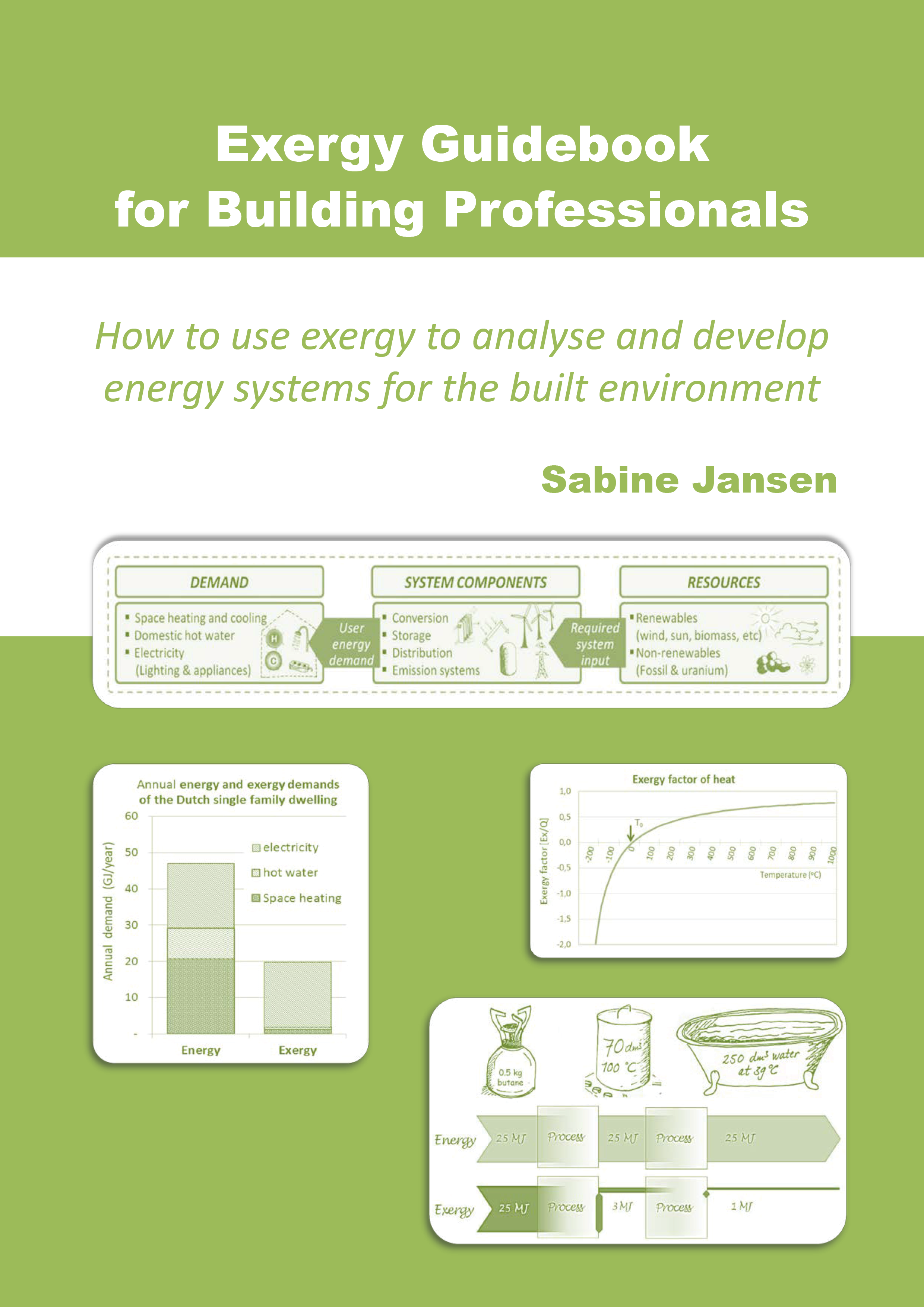The law of conservation of energy, stating that energy cannot be created nor destroyed, is inadequate to measure the performance of energy systems in the built environment: Even though energy figures suggest differently, these systems generally present a very poor performance, as they achieve only a fraction what is theoretically possible. By looking at exergy a much more meaningful insight into the performance of energy systems is obtained, which can greatly support the development of energy systems with a reduced need for high quality energy.
This publication aims to provide a clear handbook on the use of exergy in the built environment as well as on its added value in addition to an energy approach. It provides:
- An introduction to the concept of exergy
- Instructions on how to calculate exergy for processes relevant for the built environment
- Exemplary case studies demonstrating the exergy performance of current systems as well as the difference between energy and exergy assessment
- Guidelines on how to use the exergy concept to develop improved systems
- Outlook: What to expect from the exergy approach
The publication is based on the doctoral thesis ‘Exergy in the built environment – The added value of exergy in the assessment and development of energy systems for the built environment’ by Sabine Jansen (2013) and is especially meant for people working in the building practice.
This publication is realised with the financial support of RVO (‘Rijksdienst voor Ondernemend Nederland’, before named Senternovem), within the Long Term Energy Research Programme (EOS LT02003).
Delft University of Technology, October 2014, Delft
Printing advice: The content and lay-out of this publication are arranged in such a way that left and right pages really belong together. When printing one page per sheet this will automatically give the correct left and right pages. When printing two pages per sheet (e.g. 2 A5 on 1 A4, landscape lay-out), it is best to start printing from page 2 on, so that the correct pages are printed together on one sheet.
